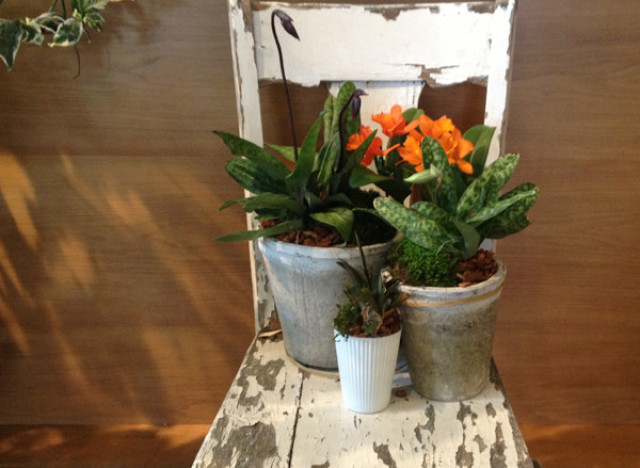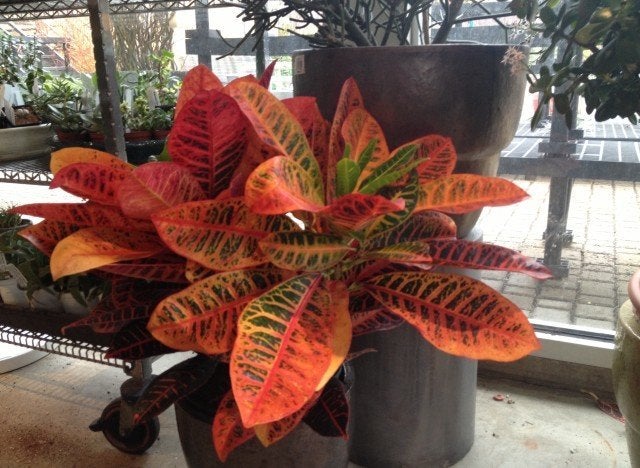With Valentine's Day approaching, I bet many are hoping to receive heartwarming gifts from loved ones (or give them, if that's more your style.) The allure and beauty of orchid flowers come to my mind immediately, but what do you say to the perplexed look of the one you bestow this symbol of your affection upon? Even the best of intentions can be met with a bewildered expression that says, "You expect me to take care of that?" Or, you might get, "Oh crap! I always kill those..." on repeat in your own head.
Never fear, many orchids on the market are in fact intergeneric hybrids (that is: crosses between the natural genera, or subdivisions of orchid types) designed by botany-buffs and marketing gurus alike. These orchids, and many natural varieties too, can thrive happily in average home conditions - with a little orchid know-how, of course!

First thing's first: an Orchid is not just an Orchid. With tens of thousands of specific orchids out there, it's crucial to narrow it down a bit. Even just coming close to identifying a broad grouping of orchids will allow one to find the right spot for said gift of beauty. Often a drastic change in environments (from greenhouse to home, for example) can offset an orchid's natural blooming time. Perhaps this new flower was coaxed into blooming at a different season than the natural ebb and flow of seasonal changes which your climate and home will offer. Flowers may skip a season in such a case, as the plant acclimates to this new pattern. Now is your chance to observe the non-floral beauty: From the wavy zig-zag of Dendrobium canes, with ladder-like leaf arrangements, clusters of often mottled foliage of Paphiopedilums, to the bulbous swells and arching leaves of orchids in the Oncidium alliance.
Orchids will come with a plastic tag anchored inside the grower's pot (the plastic pot it comes in.) If it has already been replanted by your florist or gardener, inquire about it; there's likely someone on staff who is nuts about orchids. Really, there's one in every crowd, and they should be able to shed some light on this plant's origins. To read the tag, know that the orchid name may be an abbreviation, such as "Paph." short for Paphiopedilum or "Catt." for Cattleya. The crossing of orchid types can be four, five, even six genera longs, and this compound word can be not only impossible to pronounce, but difficult to interpret from a mere abbreviation. Again, your orchid-smart friend can help shed some light on this, or a simple online search query will in fact recognize said abbreviations. Each is kept in careful catalogue by the Royal Horticultural Society - a task for the truly patient!
Okay, so now what? Well, all one simply has to do is put the right orchid in the right place. Knowing your orchid type will clue you in to not only its light requirements, but also to its temperature needs. Orchids from lower elevations typically need added humidity, decent airflow and bright, indirect light. Consider perhaps the most commonly gifted: the Phalaenopsis or "Moth Orchid." Keep this orchid warm, avoiding temperatures below 65 F when growing. An Eastern window will be a great choice. Deep green leaves will indicate too little light, while bright green means just enough, and red margins show that sunlight is too intense. This orchid is vertical (monopodial) in growth, lacking water storage for the most part. If planted in clay pottery, soak once weekly, if in plastic, once every two weeks. Potting medium should be of a medium grade, allowing air to the roots, and never allowed to go fully dry. The long, searching roots of many monopodial orchids (Phalaenopsis and Vandaceous orchids) are designed to reach and search for water, so just keep calm if you see roots hanging outside of the pot. Roots should appear plump and never soft or shriveled. Dead cell material on the outside of the roots will act like a sponge and have some water-holding capacity. Foliage will grow robust in the long days of summer and will set flower late in the season to bloom mid to late winter, in most northern climates.
To initiate flower buds, crack the window in the late summer so that evening temperatures around 50 F or so can chill the roots. Doing this for a few weeks will signal the plant to get its flower farm in action. In dim winter climates, placing the orchid near a south window in the middle of winter may prove helpful. Once flower buds are mature and begin to break, feel free to display anywhere in your home, barring direct sunlight, or any place that may have a drying or cooling draft, as any of these may cause the flowers to prematurely drop. Accomplish any re-potting after the flowers have finished. If the plant is strong and healthy, cutting back the flower spike can produce a second, even third round of flowers. Never try to force a weakened plant to re-flower.
Go forth and flower! And, don't be afraid to ask questions about these marvels of the floral world; there's probably an orchidist right under your nose who will be more than happy to outline details and care for whatever flower you choose. A few simple guidelines to follow, and you will be off to a great start!
For more helpful gardening ideas and tips, be sure to look through the Plant Of The Week slideshow below.
Have something to say? Check out HuffPost Home on Twitter, Facebook, Pinterest, Tumblr and Instagram.
**
Do you have a home story idea or tip? Email us at homesubmissions@huffingtonpost.com. (PR pitches sent to this address will be ignored.)
